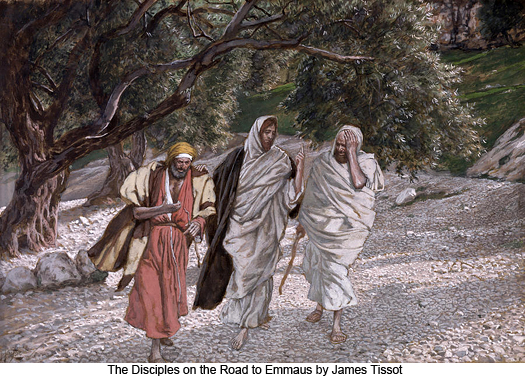My dear bothers and sisters,
Today
is the 2nd Sunday of Easter, the Divine
Mercy Sunday, and also the day Pope Francis canonizes two pillars
of the Catholic Church: the blessed Pope John XXIII and blessed Pope John Paul
II. These are two new saints of our age.
We are gathering together here in the day of God to
celebrate the Divine Mercy. Truly,
Jesus
rose from the dead on the first day of the week, Sunday, and appeared on the
same day to Mary Magdalene and the other women, to the two disciples on the road
to Emmaus, and to the gathering of the apostles. He did not appear to them
again until "a week after" (John 20:26), that is, the
following Sunday. Let us remember that, each Sunday of the year reminds us of
that first and unique Sunday when the Lord rose from the dead. Today, more than
any other Sunday, the Church invites us to remember this day, blessed among all
days, the day that saw Jesus of Nazareth rise to eternal life, Jesus the
God-man who redeemed us from damnation with his bloody sacrifice offered once
and for all on the Cross of Calvary.

Today, eight
days after Easter, the Octave of Easter, we
continue to celebrate the victory of Christ over death, over eternal death! God
came to save what was lost: through his great love, through his immense mercy,
the Lord Jesus wanted to carry out the Will of his Father and to open up to us,
through his death and resurrection, the way to Heaven.
Today,
when we are celebrating Divine Mercy
and are joyfully proclaiming - “we will sing of the mercies of the Lord...”,
let us remember that the message behind the Upper Room appearance is that Jesus
wants the disciples to know that his Church is founded on forgiveness and has a
mission to bring about peace through forgiveness. This is why he did not only
forgive them but also commissioned them to continue his mission of salvation
and forgiveness of sin.
In the Mercy
Sunday, apostle Thomas is the sign of this divine mercy. In today's gospel we
read about the appearance of the risen Lord in the assembly of the apostles on
the day of resurrection and a second appearance a week later. The second
appearance focuses on apostle Thomas who was not present with the rest of the
apostles when Jesus appeared among them. So the following Sunday Thomas is
there fellowshipping with the rest of the community. Jesus appears as usual and
Thomas experiences the desire of his heart and exclaims: "My Lord and my God”. Thomas saw the Lord
and he needed to see him to believe in his resurrection. We still call him the
doubter or “doubting Thomas” – a name given to him because of just one week in
his life when he struggled with his faith – one week which has lasted for two
thousand years! Truly, Thomas would want us to remember that he didn’t remain
stuck in disbelief. He would like to grow and change in our minds, to become
“believing Thomas” or “Thomas the convinced” and then he can encourage us to
make that same journey and dare to believe that Jesus Christ is risen.
Thomas would
want us to hear and respond to the message that he and the other apostles have
to offer. The Resurrection is the very heart of that message. The Resurrection
is the very message. Thomas offers us the message of one who would not believe
until he could actually touch the wounds of Jesus. The message that somehow if
we hang on Jesus will reveal himself to us in a way that will lead us to
declare him our Lord and our God.
On a day
like this, Divine Mercy Sunday, May Our Lord help us to recognize his mercy and
encourage us to be merciful to one another, in our homes, families and
communities. Besides encouraging us to be "masters of
divine mercy", Christ invites us like Thomas to touch his wounds
(John 20:19-31); wounds that would heal Thomas’ wounds of disbelief and
faithlessness; wounds that replaces lack of peace with Peace of Christ; wounds
that replaces the spirit of darkness with God’s Spirit of Light. Amen.
Joseph Pham Quoc Van, O.P.
